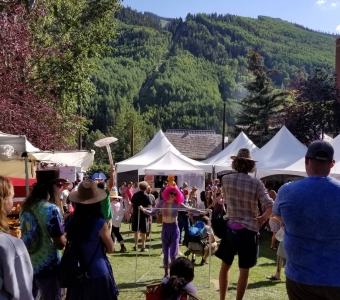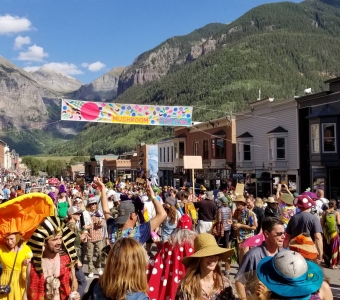The Telluride Mushroom Festival, hosted annually in the picturesque town of Telluride, Colorado, is a celebration dedicated to the fascinating world of fungi. Established in 1981, this unique event attracts mushroom enthusiasts, scientists, and anyone intrigued by the role of fungi in nature and culture.
The 45th edition of the festival is set to take place from August 13–17, 2025. Early bird tickets will go on sale on February 4, 2025, at 10:00 AM MST. For those interested in securing a spot, advanced registration is highly recommended.
Attendees can immerse themselves in an exciting lineup of activities, including:
- Educational Talks: Gain insights from experts on topics such as mushroom foraging, medicinal applications, psychedelic research, and policy developments.
- Nature Walks and Foraging: Join guided excursions into the stunning San Juan Mountains to hunt for and identify wild mushrooms with seasoned mycologists.
- Culinary Experiences: Watch chefs demonstrate how to craft mouthwatering dishes using a variety of mushrooms as the star ingredient.
- Hands-On Workshops: Engage in practical learning sessions covering mushroom cultivation and other skills for hobbyists and professionals alike.
- Community Events: Take part in the festival’s iconic mushroom-themed parade and enjoy the festive Puff Ball Dance Party, complete with costumes and lively entertainment.
For more details about this one-of-a-kind festival and to reserve your tickets, visit the official website.
The San Juan Mountains near Telluride, Colorado, are home to a diverse array of mushroom species, including:
- King Bolete (Boletus edulis): Also known as porcini, this prized edible mushroom is abundant in the area.
- Chanterelle (Cantharellus cibarius): Recognized by their golden color and trumpet shape, chanterelles are sought after for their flavor.
- Morel (Morchella elata complex): These distinctive honeycomb-capped mushrooms are typically found in spring, especially in burn areas.
- Scaly Hedgehog (Sarcodon imbricatus): Noted for its scaly cap and teeth-like spines underneath, it’s a unique find in the region.
- Snowbank Fairy Helmet (Mycena overholtsii): Often found near melting snowbanks, this small mushroom has a conical cap.
- The Prince (Agaricus augustus): A large, edible mushroom with a distinctive almond aroma, commonly found in the area.
- Cauliflower Fungus (Sparassis sp.): Resembling a cauliflower, this edible fungus grows at the base of trees.
- Purple Coral (Alloclavaria purpurea): A striking purple coral-like fungus found in coniferous forests.
- Tree-Ear Jelly Fungus (Auricularia auricula): This gelatinous mushroom grows on hardwoods like aspen.
- Yellow-Green Russula Mold (Hypomyces luteovirens): A parasitic fungus that covers the gills of red Russulas with a yellow-green mold.
- Amanita (Amanita stannea): A common Amanita species in the southern Rocky Mountains.
- Gilled Polypore (Gloeophyllum sepiarium): A common polypore with gill-like structures, found on wood.
- Caterpillar Fungus (Cordyceps sp.): Parasitic fungi that grow on insects, occasionally found in the area.
- Gyromitra (Gyromitra esculenta): Also known as false morels, these mushrooms have a convoluted cap.
- Helvella (Helvella crispa): Characterized by their saddle-shaped caps, these fungi are part of the Ascomycetes group.
- Peziza (Peziza repanda complex): Cup fungi that grow on soil or decaying wood, with a characteristic cup shape.
- Lobster Mushroom (Hypomyces lactifluorum): A parasitic fungus that transforms its host into a bright red, edible delicacy.
- Giant Puffball (Calvatia booniana): Large, white, ball-shaped fungi that are edible when young.
- Floccularia (Floccularia americana): A less common edible mushroom with a distinctive appearance.
- Hypsizygus (Hypsizygus tesselatus): A good edible mushroom that grows on trees like aspen.
This selection highlights the rich fungal diversity in the San Juan Mountains, making the region a notable destination for mushroom enthusiasts.

